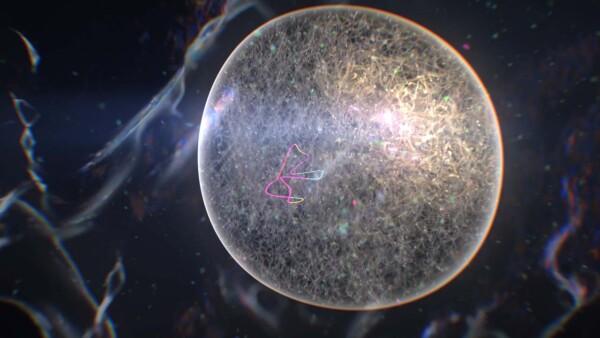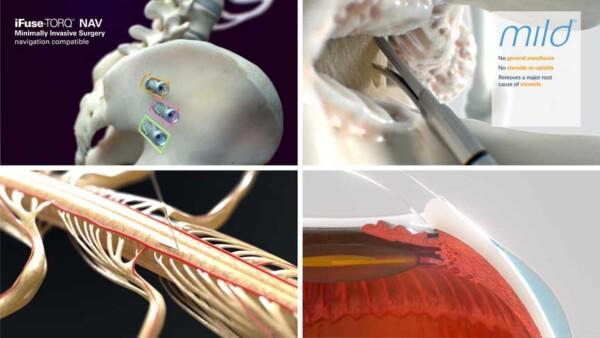Medical Animation Production—What to Expect From Start to Finish
By: Cameron Slayden
Medical animation is an industry-standard method of scientific communication. In the pharmaceutical, medical device, and biotechnology industries, it's used to explain the hard science and features behind their technologies or therapies in the most efficient format possible.
An entire industry has grown around providing for these needs at multiple price points. Commissioning this kind of work can be a considerable investment. This article will walk you through what to expect when embarking on this journey.
The Elements of Medical Animation Production
Microverse Studio’s production page lays out our specific protocol, but the phases outlined in this article go more in-depth, and should apply to just about any studio out there. These milestones were established organically over decades of experimentation. They represent the key touch points necessary for successful medical animation production. At Microverse Studios, we have found that this project flow optimizes production efficiency, without wasting client or animator time. Anything less runs the risk of an end product that doesn't meet (or exceed!) client expectations.
Briefly, here are the major production steps you should anticipate from your vendor when commissioning a medical animation:
- Scope/Discovery
- Script
- Style
- Storyboard
- Asset Assembly
- Rendering
- Compositing
- Editing
- Review
- Professional Voice, Sound, and Music
- Ancillary Deliverables
Scope/Discovery for Medical Animation
Every medical animation studio has their own method to identify how much work will go into a project, and thus cost. This tends to center around the duration of the end product. Sometimes, studios will use the word count of the script as a metric (120 words per minute), because that's a hard determiner of absolute duration.
However, we've found that there's a better way: we tie cost to the number of events taking place on screen. After all, everything that happens in a medical animation takes work to create. Sometimes an event may be easy to build and animate, but require an unusual number of words in the narration.
The human brain takes about 10 seconds to absorb a piece of information and move it from short term memory to long term memory, where it can be incorporated into a narrative. If information is presented too quickly, the brain dumps whatever it’s thinking about to make room for the next idea, and the message doesn’t get absorbed. If ideas are presented too slowly, the brain can’t easily sequence them into a coherent narrative.
If we add a second to each side of each idea for transitions, that makes the optimal pace of storytelling about 5 ideas per minute. This precisely ties the amount of labor to the end duration of the animation, making for a predictable production experience and minimizing scope creep.
Pricing based on number and complexity of onscreen events guarantees the most accurate rate. This way, scope is easily maintained by writing the narration around the important events and planning them visually in the storyboard.
Medical Animation Script
The script is the conceptual backbone of any animation, and that includes medical animation. It's important to keep spoken content grounded in verbiage that enhances onscreen events. It's also a good idea to avoid exposition. Verbiage that describes concepts that can't be directly animated risk confusing or boring viewers.
The narration is also an opportunity to inject principles of story structure into the production. With the right application, story structure can deeply enrich viewer interest.
Developing the Style for a Medical Animation
Most studios explore look and feel before starting medical animation production. If done well, look development can inject a strong aesthetic into the final product. It’s important to have key stakeholders involved in this conversation to make sure that everyone is happy with the visual approach. Often, the style developed at this stage becomes central to a product or company’s brand, so the stakes are high.
At Microverse Studios, we also create concept art to further explore how the style will apply to the scientific imagery. This way, the project begins with design documents that give a good sense of how the scientific imagery will look. This starts every project in alignment with client expectations.
Medical Animation Storyboards
A storyboard is usually created as a hand-drawn “sketch phase” for the animation. It establishes exactly what happens on screen during narration. Medical animation often includes very complicated scientific concepts. The storyboard is central to aligning client expectations with the animators' approach.
Sometimes storyboards are series of detailed digital paintings depicting every event taking place. Sometimes they are simple black-and-white sketches of those events. In either case, they serve a critical early alignment on the visual plan for the story.
Medical Animation Asset Assembly
Medical animation production begins with assembly of the geometries and images that will go into creating the final video. Sometimes these elements are sourced externally. Examples might be protein structures or gross anatomy or CAD files. In medical animation, the visual subjects tend to be complicated. Often they need to be created from scratch. At Microverse Studios, every project we produce is bespoke, and so we create all elements new for each project.
Lights are set into the scenes, the appearances of the materials designed, and the look and feel of the imagery is established. At Microverse Studios, we provide stills at this phase to give clients an early look at final imagery.
One of the assets produced during this phase is the initial narration track. Stand-in voice in the first version gives the script a final gut-check before recording with the professional voice talent.
Rendering the Medical Animation Components
The 3D build files are then converted into a series of frames in a process called rendering. This can be computationally intensive, depending on the software features the animators use. If a medical animation renders on an artist's workstation, it can often take hours or days to complete. A production bottleneck forms, even when rendering on a local computer "farm."
Artists working this way have to cut corners to speed the render process, which can impact quality. This is especially true when under deadline or rendering many projects in parallel.
Recently, other options have become available. Cost-effective supercomputing resources, such as Conductor by Coreweave, provide hollywood-level render capacity. This processing power allows animators to create their best work on every project.
Compositing for Medical Animation
Lens flare, on screen text, color correction, and other image “sweetening” is often added after rendering is complete. This requires video processing software such as Nuke, Fusion, or Adobe After Effects. Footage elements are layered over one another and effects are applied to create the final look. The final footage sequences render once again from this software to create footage sequences ready for the final edit.
Editing Medical Animation Footage
Editing is an art form unto itself. It’s said that perfect editing is invisible. When done right, it creates a precisely paced story and a seamless viewing experience. No uncomfortable pauses, no jumpy transitions. The story flow just… feels right. Stand-in narration and music are carefully mixed and laid in. The entire production is output as a whole to become the first version of the video, ready to watch.
Reviewing the Completed Medical Animation
Modern technology has made delivery and deployment of animation easy. Every studio will have their own toolset for delivery and review. We use Vimeo because it can deliver a link that can be viewed and commented on from any device. This is also important because the vast majority of medical animation is consumed on mobile devices.
At Microverse Studios, animations undergo internal review before we deliver each version to clients. After receiving feedback, our creatives meet with the client to ensure we understand the feedback fully, and to align on the plan to address it. Microverse Studios’ standard contract allows 3 rounds of refinement, although usually our projects are accepted as final after just one.
Professional Voice, Sound, and Music for Medical Animation
The client selects final voice talent from a collection of auditions. Microverse Studios has a stable of voice talent that we present to clients, but occasionally clients ask us to put out an additional casting call or contract with celebrity talent (one client wanted Edward James Olmos, and another wanted JK Simmons!). Once the edit is approved, sound effects and final music are mixed and laid in along with the final voice.
Derivative Deliverables from Medical Animation
High quality medical animation is an investment. Most studios want/expect their work to be a centerpiece for their clients’ communications strategies. Microverse Studios makes this easy by including unlimited alternate edits (such as sequence extractions or shorter versions) and still images from the video at no extra cost.
| A Thought About Weekly Status Update Meetings: Between milestones, everything is in-progress and incomplete. Often, in-progress tasks are complex and technical, and hard to communicate to non-animators. The actual reviewable material isn't ready to view until the next milestone. When clients ask for weekly meetings, they often consist of the animators saying, "We're on target for the next milestone." In other words, a meeting that could have been an email. |
Medical Animation Production Studios
When it comes to highly specialized and complex fields found in biotechnology, it's important to choose teams with optimal backgrounds. Specially trained scientific or medical animators will be able to fully understand the story they are animating. This will ensure scientific accuracy, which is critical in medical animation. It will also breathe scientific detail, nuance, and richness into the imagery.
Strong filmmaking skills will also enhance the production quality of the end product. During the production phase, our medical animators use a variety of tools to animate each event outlined in the storyboard. This task calls upon a blend of programming, simulation design, and puppeteering skills. It also requires understanding of molecular and cellular biology, as well as tissue and fluid dynamics.
Finally, a medical animation studio's internal review process will be critical to achieving the best possible outcomes. Motion elements are refined and iterated upon using unfinished renders. These “animatics” are rarely shared with clients, because they don’t look like the finished product. The animators work in a specialized 3D interface that can be difficult to interpret.
Commissioning Your Next Medical Animation
The first step, of course, will be to find out if medical animation is the right choice for you. While animation is an effective communications tool, it’s not not appropriate for every situation. The studio you work with should have input on what the best applications for animation are. They will be able to review your message and either propose an approach to animation for you, or recommend an alternative that would be more cost-effective or efficient if animation isn’t the best choice.
If you'd like to learn more about how Microverse Studios' medical animation can tell your story, get in touch! We can set up a brief 15-30 minute conversation to discuss your new technology and whether it could benefit from what we have to offer.
You might also like
- Scientific Animation and the Biotech Comeback: Lighting the Spark for Dormant Innovation
- AI in Medical Animation: A Game-Changer or Not Quite There Yet?
- How Medical Animation is Made and Why It’s Essential for Healthcare and Biotech
Microverse Studios Wins Four Awards at the 2023 Association of Medical Illustrators Salon
Microverse was recognized with four honors at the Association of Medical Illustrators (AMI) annual conference this year. This recognition underscores the studio's commitment to delivering high-quality, scientifically accurate, and aesthetically compelling medical animations that provide value and contribute to advancements in the medical and scientific community.
Medical Animation Awards
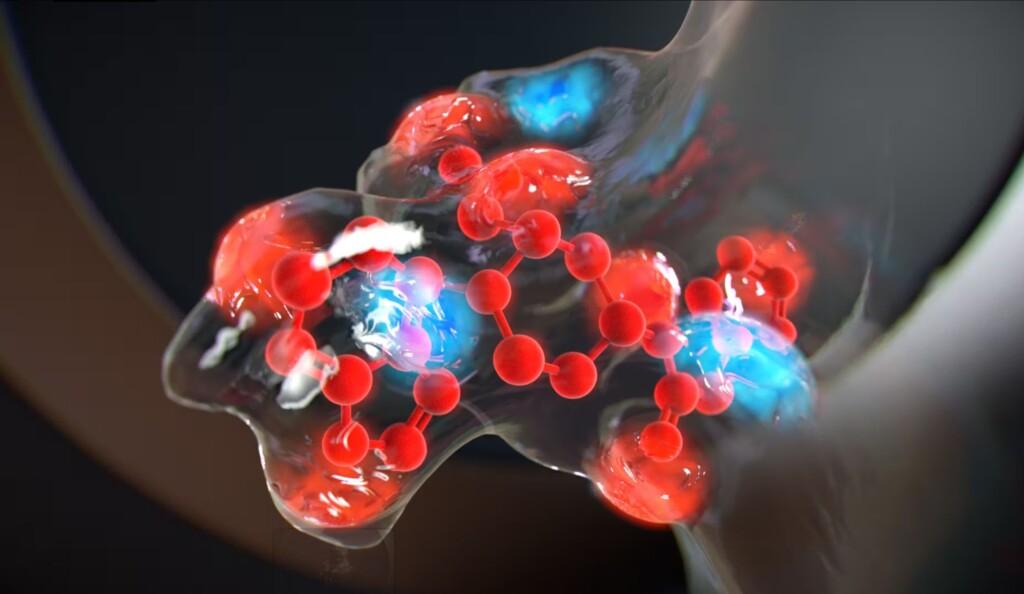
Molecular Simulation for Novel Drug Discovery
Award of Excellence
Professional Motion and Interactive Media
Ventus Therapeutics
Stephen Boyd, one of the studio's talented medical animators, received two Awards of Excellence for his elegant work this year. The first animation, The "Molecular Simulation for Novel Drug Discovery" for Ventus Therapeutics, describes how they simulate how water interacts with the binding pockets on a protein's surface, and then use that data to identify the best possible binders for that pocket from a library of trillions of known molecules. This is the second medical animation commissioned by the Ventus team.
Ventus Therapeutics is focused on discovering and developing novel medicines by targeting protein homeostasis. Recognizing the challenges associated with targeting traditionally undruggable proteins, Ventus leverages proprietary structural biotechnology platforms to access these therapeutic targets. Their mission centers on tapping into the unexplored potential of these difficult-to-drug proteins, aiming to create innovative treatments for a wide range of diseases.
Discover ResolvOME: The Next Step in Cancer Research
Award of Excellence
Professional Motion and Interactive Media
BioSkryb Genomics
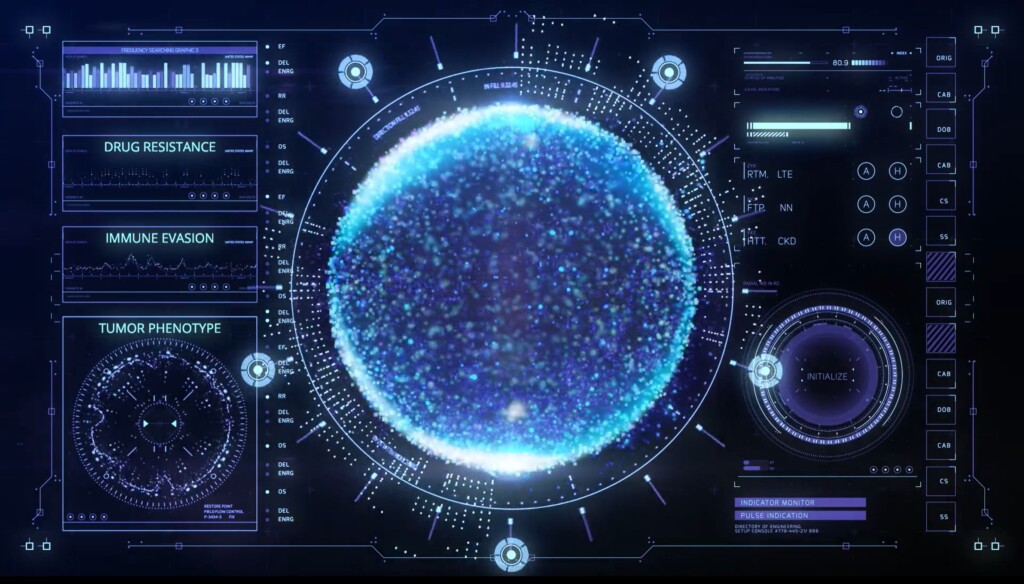
Stephen received his second Award of Excellence for "Discover ResolveOME: The Next Step in Cancer Research" for BioSkryb Genomics. This multi-award-winning medical animation showcases what Microverse Studios can do for the Contract Research Organization community. "Discover ResolvOME" describes their integrated discovery package that analyzes not only genome, but transcriptome of each individual cell in a sample. By doing so, they can gain deep insights about how cancers respond to therapies. This is the third of three animations BioSkryb has awarded to Microverse Studios.
BioSkryb Genomics is a biotechnology company that focuses on advancing genomic research and healthcare. With its proprietary Primary Template-directed Amplification (PTA) technology, the company seeks to generate high fidelity, high-resolution genomic data. This technology enables more accurate single-cell DNA sequencing and better characterization of the vast genomic diversity across different samples. Their mission revolves around ensuring that researchers and clinicians can access accurate genomic information to propel advances in disease understanding and treatment.
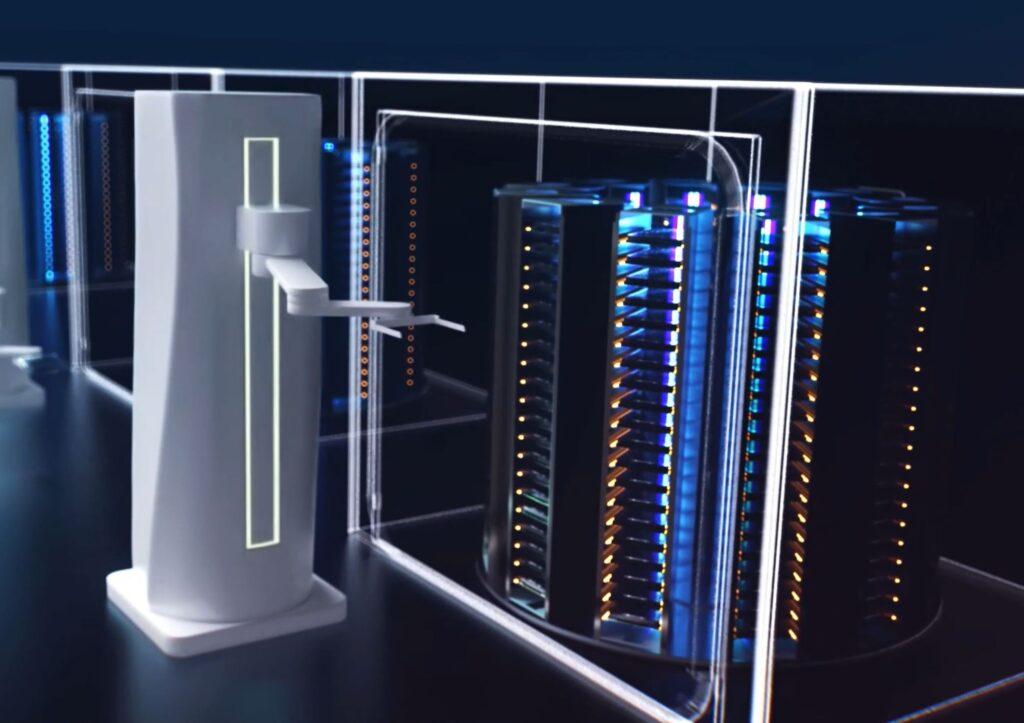
Optics-Free Cell Imaging at Scale
Award of Excellence
Professional Motion and Interactive Media
CytoTronics
Molly Huttner, another pivotal member of the Microverse Studios team, received an Award of Excellence for her biotech animation "Optics-Free Cell Imaging at Scale" for CytoTronics. This is the second CytroTronics production entrusted to Microverse. The animation explains their use of an ultra-high resolution nano-scale CMOS chip to read cell activity, and outlines their plans to do so at large scale in order to allow massively multiplexed data collection, enabling never-before-possible insights that will drive the next wave of drug discovery.
CytoTronics is at the forefront of bioelectronic medicine, aiming to provide novel therapeutic solutions. Their advanced bioelectronic devices and systems are tailored for real-time monitoring and modulation of cellular functions in a controlled manner. By delivering precise electrical signals to cells, they gather multiple types of data and can influence cellular behaviors and functions. The company's vision encompasses a future where bioelectronics plays a pivotal role in treating diseases, rehabilitating patients, and advancing the overall quality of life.
Programming the Pharmacophore
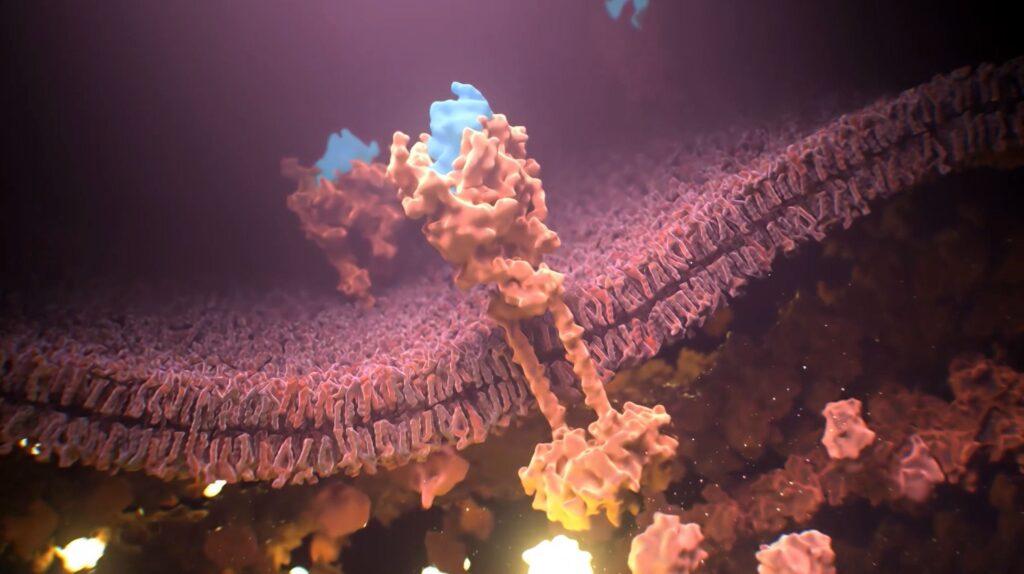
Finally, Cameron Slayden was honored with an Award of Merit for "Programming the Pharmacore" created for Metaphore Biothechnologies. This biotech animation describes how their new MIMiC™ platform predicts and defines the entire pharmacophore, or pocket-binder interface of a target interaction. Using this information, they then use AI and machine learning to design new binding peptides with more desirable features.
Metaphore Biotechnologies is a pioneering company in the realm of computational biology that blends machine learning and AI-guided molecular design with wet-lab gene expression and analysis. Their MIMiC™ platform drives unprecedented insights into molecular interactions to design new molecules precisely tuned for therapeutic benefit.
You might also like
- Scientific Animation and the Biotech Comeback: Lighting the Spark for Dormant Innovation
- AI in Medical Animation: A Game-Changer or Not Quite There Yet?
- How Medical Animation is Made and Why It’s Essential for Healthcare and Biotech
How Animation Can Enhance Scientific Communication
In the rapidly evolving world of scientific communication, technology continually reinvents the ways we share and understand complex concepts. Among the various tools at our disposal, animation stands out as a particularly transformative one. This post delves into the fascinating fusion of animation and scientific communication, with a particular focus on the critical role played by medical animators. As we explore the potential of animation in making science more accessible and engaging, we'll see how it aids in everything from patient education to explaining the most complex scientific research, democratizing science in the process and paving the way for a future where scientific knowledge is within everyone's reach.
Animation: Making Scientific Communication Accessible
Often, scientific communication is a complex process that can be difficult for non-experts to comprehend. This is particularly true for fields like medicine and biotechnology, which deal with intricate mechanisms that happen at the microscopic or even molecular level. Here, the job of a medical animator becomes instrumental. By using their talent to visualize these processes, these specially trained animators help create a more accessible and comprehensible version of scientific communication.
For example, consider the communication of a concept like protein synthesis or the pathway of a drug through the body. Traditionally, these mechanisms have been represented by static illustrations or complex biochemical charts. While informative, they can be challenging for non-experts to interpret. However, an animation can depict these same processes in a sequential, dynamic manner, highlighting each step and allowing viewers to visualize the process as it occurs.
This approach not only aids in comprehension but can also spark interest and engagement. Complex scientific ideas, when depicted in an animated format, become fascinating journeys of discovery that draw in the viewer. This is particularly crucial in an era where scientific literacy is increasingly important, yet many find science intimidating or inaccessible.
Furthermore, because animations can be paused, replayed, and viewed at one's own pace, they provide a more learner-friendly medium. They cater to individual learning speeds and allow viewers to focus on parts they find challenging, facilitating a more comprehensive understanding. This combination of accessibility, engagement, and adaptability makes medical animation a potent tool in scientific communication.
The Power of Visual Learning in Scientific Communication
Visual learning is a widely accepted and effective learning style. Medical animators employ this technique to depict scientific scenarios with precision and detail. The use of animation in scientific communication can transform static, complicated diagrams into dynamic, interactive visualizations. This aids in making the communication process more engaging, thereby increasing understanding and retention of information.
Furthermore, animation allows for a universal language that transcends disciplinary jargon and cultural barriers. It gives form to theoretical concepts, visualizing them in a manner that everyone on a team can understand, irrespective of their individual expertise. The transformative effect of medical animation in various scientific domains extends even further when we consider its potential in facilitating collaborative efforts. As teams of scientists from diverse fields and geographical locations work together on complex research projects, clear and precise communication is crucial. However, written descriptions and static diagrams may not always capture the full breadth of a concept, and that's where animation comes in.
Democratizing Scientific Communication: Role of Medical Animators
Medical animators also play a crucial role in the democratization of scientific communication. Traditionally, research findings and scientific concepts have been locked behind the complex language of research papers. But with the advent of digital platforms and the work of medical animators, scientific communication has become more inclusive and accessible.
Notably, this increased accessibility extends beyond laypeople seeking to understand complex scientific concepts for personal or professional reasons. It has also found its way into classrooms, from primary schools to universities. Teachers and professors can use animated medical videos as educational tools, presenting scientific theories in an engaging and comprehensible manner that enhances student understanding and fosters a love of science.
The work of medical animators has also influenced policy-making and public health initiatives. Clear, easy-to-understand animations can illustrate the spread of diseases or the impact of public health measures, providing crucial information for policy-makers and helping the public understand why certain measures are needed.
Moreover, scientific startups and research institutions are increasingly leveraging animations to communicate their work to investors and the public. This not only aids in securing funding but also promotes transparency and trust. Through these examples, it's clear that medical animators are not just making scientific communication more understandable—they are also contributing to a more informed and engaged society.
Enhancing Patient Education through Animation
Another aspect where animation assists scientific communication is in patient education. Understanding medical conditions and treatments can be intimidating and confusing for patients. However, animations produced by medical animators can simplify this process, effectively explaining conditions, treatments, or procedures.
For instance, a patient diagnosed with a cardiac issue can watch an animation of the heart's functioning, allowing them to visualize and comprehend the underlying problem. In a similar vein, patients undergoing a complex surgical procedure can benefit from a step-by-step animated walkthrough of the surgery, giving them a clearer understanding and reducing apprehension.
Furthermore, animation can be an invaluable tool for illustrating lifestyle impacts on health. Patients struggling with chronic diseases such as diabetes or hypertension could watch animations that detail the effects of diet, exercise, and medication adherence on their health. Such visual representations can motivate patients to adhere to their prescribed treatment plan more effectively, as they have a clear understanding of why each step is crucial.
In pediatric care, animation can be an effective means to educate and calm young patients who might be frightened about medical procedures. By incorporating elements of storytelling and familiar characters, animated medical videos can make the process less daunting for children. This not only benefits the child but also aids in the interaction between medical professionals and parents, ultimately facilitating better healthcare delivery.
Conclusion
In the world of scientific communication, the role of a medical animator is thus increasingly becoming indispensable. They translate the abstract into the tangible, the microscopic into the visible, and the complicated into the comprehensible. Animation opens up avenues for scientific communication to be more engaging, comprehensive, and inclusive. As we progress in the digital age, the role of animation in scientific communication will only grow, creating an exciting future where science is within everyone's reach.
You might also like

